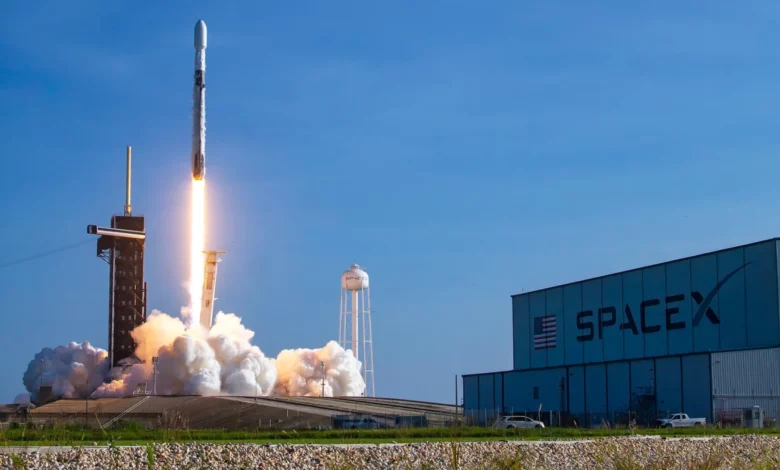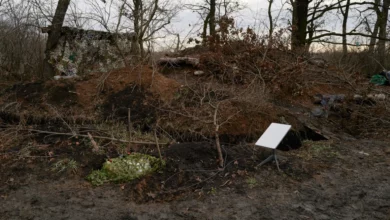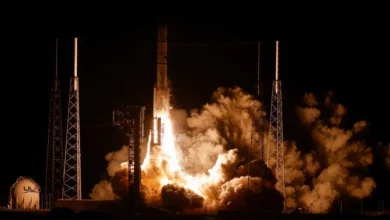
The report was delivered to members of Congress by the Federal Aviation Administration, which licenses the launch and reentry of commercial spacecraft, on October 5.
The 35-page analysis, compiled in part by the nonprofit research group The Aerospace Corporation, offers a dire picture of the potential dangers associated with large networks of satellites such as Starlink, suggesting that by 2035, “if the expected large constellation growth is realized and debris from Starlink satellites survive reentry … one person on the planet would be expected to be injured or killed every two years.”
It also estimates that the probability of an aircraft being downed by a collision with falling space debris could be 0.0007 per year by 2035.
SpaceX slammed the report’s conclusions in a letter dated October 9, calling the claims regarding risk of injury and death associated with Starlink “preposterous, unjustified, and inaccurate.”
The company’s letter, obtained by CNN, states that the report relied “on a deeply flawed analysis that falsely characterizes reentry disposal risks associated with Starlink.” SpaceX also accused the Aerospace Corporation of failing to reach out to SpaceX for information and not including the company’s own analysis and reports regarding Starlink satellite disposal.
“To be clear, SpaceX’s satellites are designed and built to fully demise during atmospheric reentry during disposal at end of life, and they do so,” according to SpaceX’s letter.
The letter also states that 325 Starlink satellites have already deorbited since February 2020, and no debris has been found.
In a statement issued Tuesday afternoon, the Aerospace Corporation said, “Our technical team is in communication with SpaceX and others to review and update the data.”
The research group said it was approached by the FAA more than two years ago “to do an independent assessment of collective risks associated with satellite re-entry, based upon the projection of all planned operators under U.S. regulation in 2021,” according to the statement. “The data included existing and planned constellations through 2035. The greatest percentage of satellites were those in Low Earth Orbit.”
‘A significant risk over time’
The FAA analysis does acknowledge that SpaceX says its Starlink satellites fully burn up in the atmosphere when they fall back to Earth at the end of service, posing no increased risk of striking people, airplanes or infrastructure. And the report acknowledges that the Federal Communications Commission, which authorizes satellite operators, accepted that assessment.
But The Aerospace Corporation “assessed that the SpaceX spacecraft could each produce three pieces of debris of 300 grams. For purposes of this report, the FAA uses the more conservative approach,” according to the document.
It also noted that “with the thousands of satellites expected to reenter, even a small amount of debris can impose a significant risk over time.”
SpaceX refuted that claim, stating that the assessment relied on “egregious errors, omissions and incorrect assumptions.” The company said the statistics were based on a 23-year-old NASA study about satellites developed by a different satellite operator, Iridium, and was never intended to be used for risk assessment purposes.
SpaceX in its letter also criticized the report for focusing “only on Starlink, disregarding other satellite systems like Amazon’s Project Kuiper, OneWeb, or any of the LEO systems being developed and deployed by China.” (Emphasis added by SpaceX.)
Starlink is mentioned 28 times in the FAA report, while Amazon’s Project Kuiper system is mentioned four times in data tables. The analysis also states that by 2035, SpaceX’s satellites will account for “85 percent of the expected risk to people on the ground and aviation.”
When reached for comment Tuesday, the FAA replied that it is “reviewing the letter.” The four members of Congress who received the original report did not immediately provide a comment.
The report was crafted for Congress in response to a 2020 statutory requirement that the FAA look into how — in its regulatory capacity — it might address safety risks associated with launch and reentry.
The FAA states in the report that even if the agency “amended its regulations through rulemaking, the FAA’s requirements would fall short of addressing all reentry risks to people on the ground or in aircraft since the FAA’s authority does not extend to payloads launched from outside the United States.”




